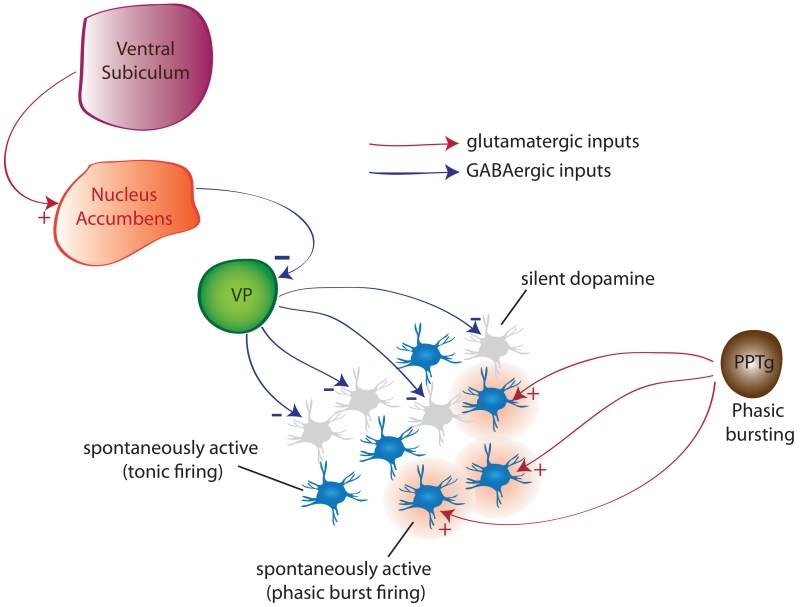Figure 1.
Dopamine neurons exist in distinct states of activity; baseline tonic population activity (i.e., proportion firing spontaneously), and rapid, salience-driven phasic burst firing In the normal rat, approximately half are firing spontaneously, with the other half in an inhibited, non-firing state. This inhibition is maintained by a potent GABAergic inhibitory input from the ventral pallidum. This state is regulated by an input from the hippocampus ventral subiculum. Activation of the subiculum excites the nucleus accumbens, which then inhibits the ventral pallidum to release dopamine neurons from inhibition. The number of dopamine neurons active is an important variable, in that it sets the amplitude of the rapid, burst firing-mediated phasic dopamine response driven by the pedunculopontine tegmentum. Since only spontaneously firing dopamine neurons can be driven to burst fire, changing the number of neurons active will affect the amplitude of the phasic dopamine response.

